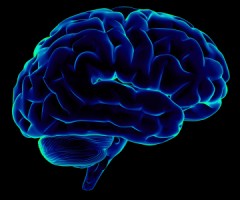Marijuana is the most commonly abused illicit drug in the United States. It is a dry, shredded green and brown mix of flowers, stems, seeds, and leaves derived from the hemp plant Cannabis sativa. The main active chemical in marijuana is delta-9-tetrahydrocannabinol; THC for short.
THC acts upon specific sites in the brain, called cannabinoid receptors, kicking off a series of cellular reactions that ultimately lead to the “high” that users experience when they use marijuana. The highest density of cannabinoid receptors are found in parts of the brain that influence pleasure, memory, thoughts, concentration, sensory and time perception, and coordinated movement.
It is known that long-term marijuana use can lead to addiction. Long-term marijuana abusers trying to quit report irritability, sleeplessness, decreased appetite, anxiety, and drug craving, all of which make it difficult to quit. These withdrawal symptoms begin within about 1 day following abstinence, peak at 2–3 days, and subside within 1 or 2 weeks following drug cessation.
Marijuana intoxication can cause distorted perceptions, impaired coordination, difficulty in thinking and problem solving, and problems with learning and memory. Research has shown that marijuana’s adverse impact on learning and memory can last for days or weeks after the acute effects of the drug wear off. As a result, someone who smokes marijuana every day may be functioning at a suboptimal intellectual level.
Many recreational marijuana users report that smoking marijuana decreases their anxiety. However, one of the most reported side effects of smoking marijuana are intense anxiety and panic attacks (30 percent of recreational users reported this). It is important to factor dose into this as lower doses of THC can be sedating while higher doses can increase anxiety.
Research on the long-term effects of marijuana abuse indicates some changes in the brain similar to those seen after long-term abuse of other major drugs. For example, cannabinoid withdrawal in chronically exposed animals leads to an increase in the activation of the stress-response system and changes in the activity of nerve cells containing dopamine. Dopamine neurons are involved in the regulation of motivation and reward, and are directly or indirectly affected by all drugs of abuse.
Long-term marijuana abuse can lead to addiction; that is, compulsive drug seeking and abuse despite its known harmful effects upon social functioning in the context of family, school, work, and recreational activities. A number of studies have shown an association between chronic marijuana use and increased rates of anxiety, depression, suicidal ideation, and schizophrenia. Researcher John McGrath of the University of Queensland, Australia, and colleagues studied 3,801 young-adult sibling pairs and concluded that those who used marijuana the longest (six or more years) were twice as likely to develop schizophrenia or delusional disorders. They also were four times more likely than non-users to score highly on a test measuring psychotic-like experiences.
Physically, marijuana increases heart rate by 20–100 percent shortly after smoking; this effect can last up to 3 hours. In one study, it was estimated that marijuana users have a 4.8-fold increase in the risk of heart attack in the first hour after smoking the drug. This may be due to the increased heart rate as well as effects of marijuana on heart rhythms, causing palpitations and arrhythmias. This risk may be greater in aging populations or those with cardiac vulnerabilities. Numerous studies have shown marijuana smoke to contain carcinogens and to be an irritant to the lungs. In fact, marijuana smoke contains 50–70 percent more carcinogenic hydrocarbons than does tobacco smoke. Marijuana users usually inhale more deeply and hold their breath longer than tobacco smokers do, which further increase the lungs’ exposure to carcinogenic smoke. Marijuana smokers can have many of the same respiratory problems as tobacco smokers, such as daily cough and phlegm production, more frequent acute chest illness, and a heightened risk of lung infections. A study of 450 individuals found that people who smoke marijuana frequently but do not smoke tobacco have more health problems and miss more days of work than nonsmokers. Many of the extra sick days among the marijuana smokers in the study were for respiratory illnesses.






